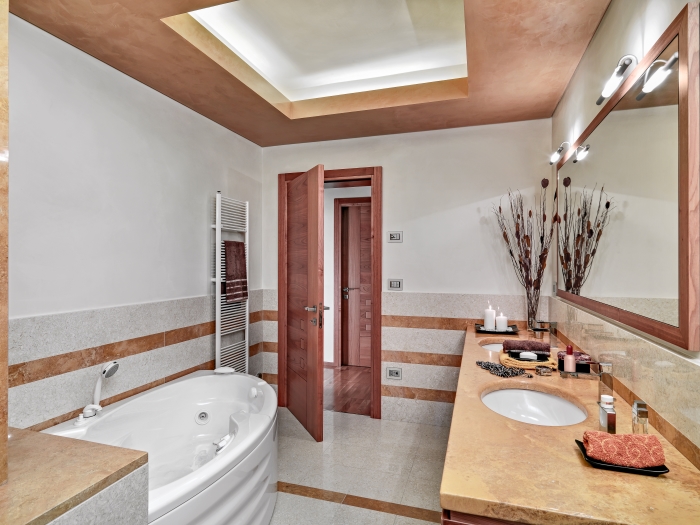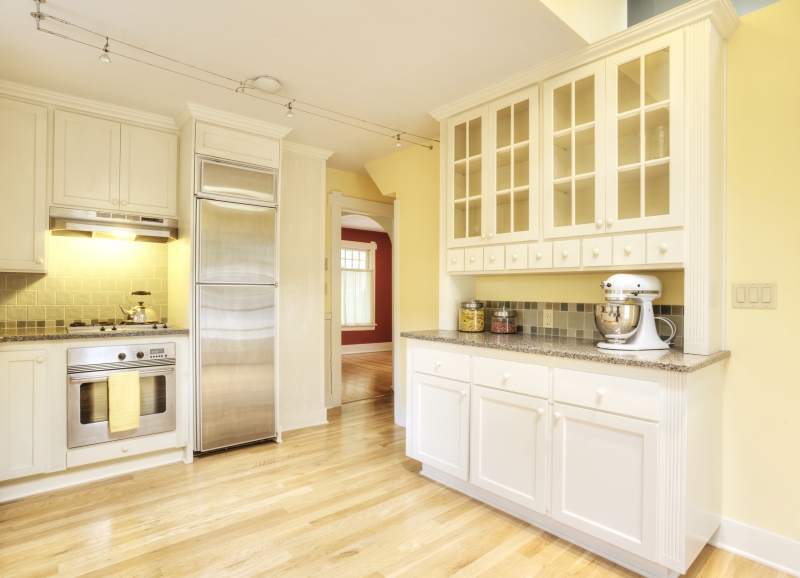
- By Bryan Uslu
- In Build, Repairs
Transforming Your Home from the Inside
Indoor remodeling is one of the most effective ways to refresh your living space, increase your home's value, and improve your overall quality of life. Whether you’re renovating a single room or giving your entire house a makeover, proper planning is key to achieving the desired results. This guide will walk you through the essential steps to consider for a successful indoor remodeling project.
Step 1: Determine Your Remodeling Goals
Before diving into the details, it’s essential to understand what you want to accomplish with your indoor remodel. Are you looking to enhance functionality, modernize your space, increase energy efficiency, or simply improve aesthetics?
-
Upgrade or Add Functionality: Maybe your kitchen layout doesn’t suit your cooking habits, or you need more storage space in the living room. Consider how the remodel can improve the practical aspects of each room.
-
Increase Home Value: Remodeling can significantly boost your home’s resale value. Prioritize areas like the kitchen, bathrooms, and main living spaces, as they typically provide the highest return on investment.
-
Energy Efficiency: If reducing energy bills is important, incorporate energy-efficient windows, doors, lighting, and insulation into your remodeling plans.
-
Create a Modern Look: If your home feels outdated, a fresh coat of paint, new flooring, and updated fixtures can create a contemporary, stylish environment.
Step 2: Plan Your Budget and Timeline
Setting a realistic budget and timeline will help keep your project on track and prevent unexpected surprises.
-
Establish a Budget: Break down your budget by category (materials, labor, permits, etc.) and always leave room for unexpected costs. On average, you should allocate 10-20% of the total budget for contingencies.
-
Create a Timeline: Consider how long each phase of the project will take. For larger projects, it’s essential to plan for possible disruptions to your daily routine, especially if you’re remodeling key areas like the kitchen or bathroom.
Step 3: Choose a Style and Design
Before starting any construction, think about how you want the interior of your home to look. Consistency in design will create a cohesive and attractive space.
-
Explore Design Styles: Whether you prefer a modern, minimalist aesthetic or something more traditional and cozy, research different styles to find what best fits your personality and home’s architecture.
-
Consult an Interior Designer: If you’re unsure where to start, hiring an interior designer can help you make the most of your space. They’ll provide expert advice on color schemes, furniture placement, and materials.
Step 4: Focus on Key Areas
Certain areas in the home tend to have a greater impact on your daily life and the overall value of the house. These key areas often receive the most attention during indoor remodeling projects:
-
Kitchen Remodel:
-
Layout: Optimize the kitchen’s layout for maximum efficiency. A popular choice is the open kitchen concept, which combines the kitchen with the dining or living area for a more spacious and social environment.
-
Cabinets and Storage: Add custom cabinetry or maximize vertical storage to make your kitchen more functional.
-
Appliances: Consider upgrading to energy-efficient appliances that not only look great but also save you money in the long run.
-
-
Bathroom Remodel:
-
Fixtures: Update outdated fixtures with modern, water-efficient models to improve both style and functionality.
-
Tiles and Flooring: Choose moisture-resistant materials for bathroom flooring, such as ceramic tiles or waterproof laminate.
-
Shower and Bathtub: Replace an old tub with a walk-in shower for a contemporary look, or consider adding luxury elements like a rain showerhead or soaking tub.
-
-
Living Room Update:
-
Open Concept: If your living room feels cramped, knocking down non-load-bearing walls can create an open-plan layout, making your home feel larger and more inviting.
-
Lighting: Incorporate layered lighting by adding a mix of ambient, task, and accent lights to create a comfortable and warm atmosphere.
-
Fireplace: Update an old fireplace with a modern design or convert it into an electric or gas model for added convenience and energy savings.
-
-
Bedroom Refresh:
-
Closet Space: Add built-in closets or upgrade to walk-in closets to improve storage and organization.
-
Walls and Flooring: Repaint the walls in calming colors and replace worn-out flooring with something more luxurious, such as hardwood or plush carpet.
-
Windows: Maximize natural light with larger windows or by installing skylights.
-
-
Home Office Renovation:
-
Ergonomic Design: Make sure your home office is comfortable and functional by choosing ergonomic furniture and sufficient storage.
-
Technology Upgrades: Install proper wiring and outlets for electronics, ensuring that your space can handle the technology you use regularly.
-
Soundproofing: Add soundproofing to minimize noise distractions, especially if you’re working from home or need a quiet space.
-
Step 5: Select the Right Materials
Choosing the right materials for your remodel can have a significant impact on both aesthetics and durability.
-
Flooring: Popular options include hardwood, tile, vinyl, or laminate. Each has its own advantages, so consider factors like cost, maintenance, and the room's function when making a choice.
-
Walls: Repainting walls is one of the easiest ways to refresh your home’s interior. Consider adding texture or wallpaper as a feature wall to make a statement.
-
Cabinetry and Countertops: For kitchens and bathrooms, choose durable materials like granite, quartz, or solid surface countertops. Custom or semi-custom cabinetry can significantly improve storage and aesthetics.
-
Lighting Fixtures: Modern lighting can enhance both the functionality and appearance of your home. LED fixtures are energy-efficient and can be integrated into smart home systems for added convenience.
Step 6: Hiring Contractors vs. DIY
Some aspects of remodeling can be done yourself, but larger projects often require professional help. Here’s how to decide:
-
When to DIY: If you have the skills and tools, tasks like painting, installing light fixtures, and some flooring projects can be DIY-friendly. Always make sure you’re comfortable and confident with the work before starting.
-
When to Hire a Professional: For complex jobs like plumbing, electrical, or structural changes, it’s crucial to hire licensed contractors. They’ll ensure the work is done to code and prevent costly mistakes down the road.
Step 7: Final Touches and Decor
Once the major renovations are done, the final step is to add decor and finishing touches that reflect your style.
-
Furniture and Layout: Arrange your furniture in a way that maximizes space and flow. Avoid overcrowding rooms and select pieces that match the overall design theme.
-
Personalize the Space: Add artwork, plants, throw pillows, and rugs to bring warmth and personality to each room.
-
Smart Home Features: Consider installing smart home technology, such as thermostats, lighting controls, or security systems, to improve convenience and energy efficiency.
Conclusion:
Indoor remodeling is a rewarding process that can transform your home into a more functional, stylish, and comfortable space. By following these steps, you can ensure a smooth, successful project, whether you’re making small updates or undertaking a major renovation. With careful planning, the right materials, and attention to detail, your newly remodeled home will be a space you and your family can enjoy for years to come.
If you’re considering an indoor remodel and need expert advice or services, contact us today for a free consultation!





